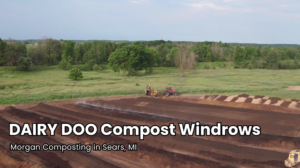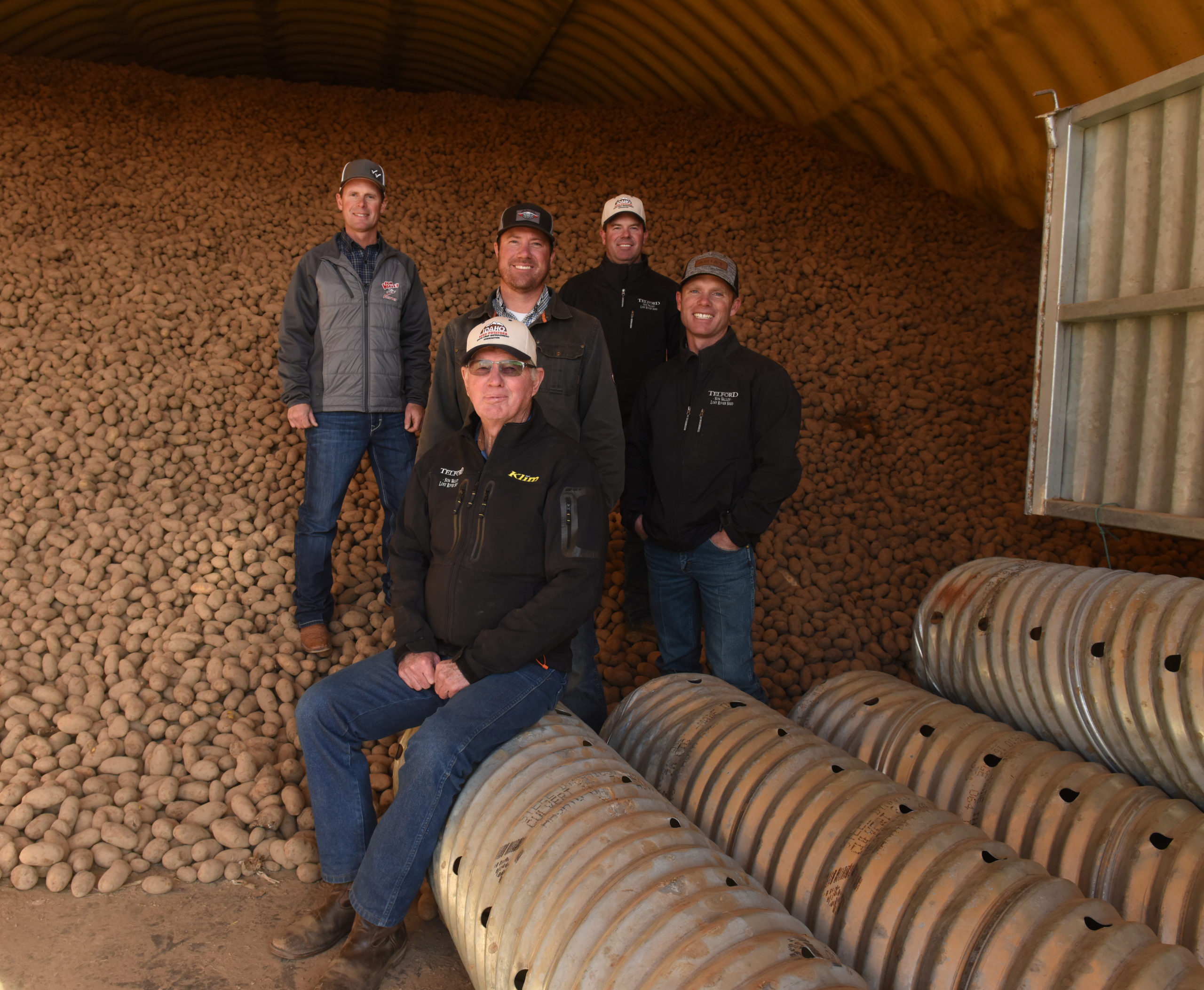Packaging innovation unlocks the future for Colorado potato grower
It’s shiny, almost futuristic. It’s compact and made of stainless steel and glass. It’s computer driven and engineered to size, weigh and pack potatoes in consumer-friendly mesh bags, with sizes ranging from 1 pound to 5 pounds. This new packaging equipment, made by the Spanish manufacturer Giro, is the centerpiece of Harry Strohauer’s warehouse in La Salle, Colo.
But really, this story is not about the latest and greatest new packaging equipment. It’s about a grower (and intuitive businessman) who, through innovative packaging and specialty potatoes, has brought a consumer focus to his business and increased the value of his potatoes.
If we wanted to stay viable in this industry, I knew we had to do something different,” Strohauer said.
He watched neighbors move to Kansas or Nebraska or simply stop farming.
Water continues to be a struggle and has greatly reduced the ground available for potatoes. With the increased cost of water and lack of ground, specialty and organic production looked like a good fit.
Strohauer’s big “eye-opener” came in December 2004. He traveled to the first Outlook Summit in Colorado Springs and listened intently to presentations about the need for innovation in the potato industry, specifically in the fresh segment.
“I sat there listening as Tim O’Connor (U.S. Potato Board president and CEO) shared a case study about how the dairy industry quadrupled sales to Wendy’s and McDonald’s after they developed kid-friendly containers with bright colors and fun graphics and expanded offerings of both 2 percent and chocolate milk.
“I still can see Tim waving his hands in the air, saying, ‘It’s the same milk!'” Strohauer said.
That was when Strohauer changed direction. He had long wanted to pack his own potatoes, and the information from the summit motivated him to invest in packaging equipment. By harvest-time in 2005, he was ready to pack and ship his own gourmet potatoes, while still partnering with Martin Produce and Cannon for a majority of his mainstay potatoes. Strohauer Farms had grown russets, Yukon golds and reds. The breadth of offerings was expanded that year to include fingerlings and purples. Every element of his packaging was based on USPB-commissioned research on packaging and demographics. At that point, he had 14 different “header bags” in which the specialty varieties were hand-packed.
“My retail customers were very happy to see the same high-quality potatoes packaged in a way that would meet their consumer needs,” he said.
In 2006, Strohauer added another premium element to his portfolio: assorted organic potatoes. It was a risk, but by harvest he had more orders than he could fill.
“Consumer demand for organic potatoes is increasing significantly,” said Tanya Fell, whom Strohauer hired in 2005 to direct the marketing and retail relations for his line of specialty varieties. “It’s a niche product that appeals to consumers, but just like the conventionally grown potatoes, it’s important to educate consumers on what to do with these unique varieties. We did sampling demos at a Whole Foods in Denver and went through 40 cases in four hours a record in demo sales.”
Part of the decision to bring the Giro packaging system into the warehouse was to eliminate the hand labor. It also reduced the number of bags needed to just four, as the computer generates UPC codes and variety labels automatically. It also runs 30 bags per minute.
Fell said every inch of the label, which wraps around each bag, serves as the brand’s point-of purchase. Based upon their own consumer research, they created a colorful and elegant label for their brand, Rocky Mountain Gourmet Potatoes, that highlights recipes, nutrition information and handling and storage information. Plastic handles a long-time consumer request make carrying easier. The mesh packaging also allows consumers to inspect the potatoes. Words on the packaging describe the potatoes as gourmet, heirloom, savory delight and favorite among chefs.
Strohauer Farms has used its packaging technology to become a partner with many retailers, such as Whole Foods, to provide a premium product that meets the needs and interests of upscale consumers. Strohauer is realizing an increased profit margin, proving his investment is paying off.
“This is a great example of changing your business model,” said Mac Johnson, vice president of domestic marketing for the U.S. Potato Board. “Retailers are looking for a lot more from their suppliers. Right up there with logistics and category management is helping them respond to their customers.”
Johnson said that for a business Strohauer’s size he took a big risk, “but he helped reduce his risk by focusing on two key aspects: his retail partners and the consumer. He developed retailer partnerships, invested in consumer-friendly packaging and expanded the offering into unique potatoes. Potatoes are America’s favorite vegetable and innovators like Harry Strohauer are helping to ensure it stays that way.”
Strohauer Scouting Regimen
Harry Strohauer is a third-generation potato farmer. In the 70 years the Strohauers have farmed in northern Colorado, the operation has grown to 3,200 acres of potatoes, corn, wheat, onions and other vegetables.
Strohauer Farms recently started growing organic fingerling potatoes to sell under the company’s premium-brand label. The addition of an organic line means Strohauer has had to adapt his scouting regimen to monitor the nutrients and more closely check the size and condition of his potatoes.
“We walk everything twice a week,” Stohauer said. “One time we’re pulling petioles for fertilizer management and the other time we’re digging potatoes looking at the size.”
The farm’s location in northern Colorado has more pressure from pests nematodes and phylids than disease, although early blight has been known to occur. Strohauer’s methodical scouting trips include checking for pest damage and evidence of disease.
Because the organic fingerlings are a new crop, Strohauer has been testing the petioles for nutrient levels in the plants, although there’s not much he can spray to correct them, he said. It’s more of a chance for him to see how the plants are taking up the nutrients and so he can compare crops in future seasons. Petiole samples are collected from the same areas in the fields to monitor nutrient uptake throughout the growing season.
Strohauer is not always present on the scouting walk that pulls the petioles, but he’s always present during digging. He’ll randomly dig some plants to see how the fingerlings are developing and what their condition is. The scouting trips become even more important during vine kill, he said. Fingerlings size up quickly, so he has to watch them carefully to make sure they don’t get too big before vine kill. As they size up, he may increase the number of plants he digs or the number of times he goes into the fields to dig.”














